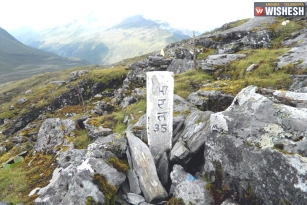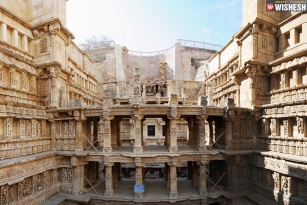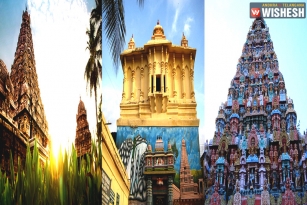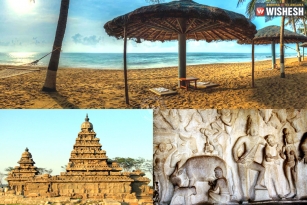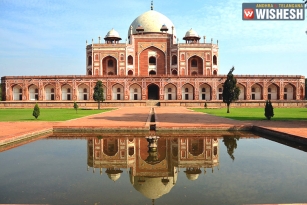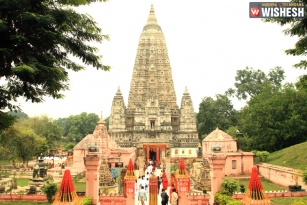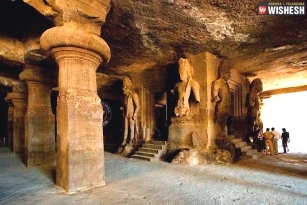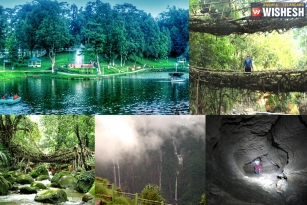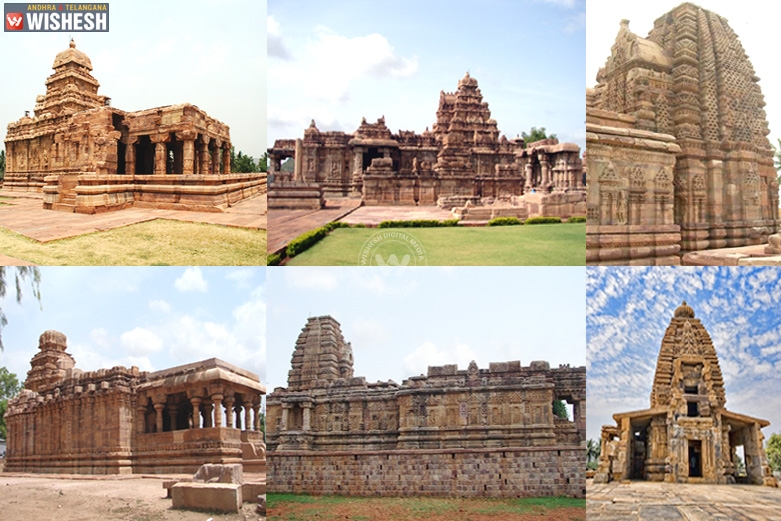
Pattadakal - A Fusion In Architecture:- Famous for its temples and other world heritage sites depicting a fusion architectural style, Pattadakkal is located in Bijapur district of Karnataka. A town close to Aihole and Badami, and is situated on the banks of the Malaprabha river.
The temples here which are amazingly crafted are the main attractions in Pattadakal, which showcase the best of various types of architecture. This blend gives the town a good deal of significance in the tourism and architectural scene. These temples offer the town its unique identity. The various temples her that one must visit are Jain temple, Papanatha temple, Galaganath temple, Sangameshwara temple and more.
A famous historical site, Pattadakal is visited by tourists from all over. It is a favorite destination for historians and archaeologists. It is ideal for family vacations even.
Accommodation has to be arranged in Badami, where there are mid and low range accommodation options for tourists in badami. Being a small town, there are very few luxury resorts in Badami
- Best Time To Visit : October - March
History
Not only empire builders, but the Chalukyan rulers were great patrons of art whose encouragement prompted the artists and craftsmen to experiment and innovate in different architectural styles and giving it a new dimension. The transition from rock-cut medium to structural temples took place in their period. The place is not only famous for Chalukyan architectural activities but also a holy place for royal coronation, “Pattadakisuvolal”.
The blend of temple buildings can be seen with the architectural styles of Rekha, Nagara, Prasada and the Dravida Vimana.
The oldest temple at Pattadakal is Sangamesvara built by Vijayaditya Satyasraya (AD 697-733). The Kadasiddhesvara, Jambulingeswara are the other notable temples at Pattadakal, both which attributed to 7th century A.D.
A century later, the Galaganatha temple was built in the style of rekha nagara prasada. The last to be built in early Chalukyan style, was the Kasivisvesvara temple.
To celebrate the victory over the Pallavas by her husband Vikramaditya II, the Mallikarjuna temple was constructed by Rani Trilokyamahadevi. Influenced by the architecture of the Kailasanatha temple at Kanchipuram, she is also credited to have built the Virupaksha temple. For the Rashtrakuta ruler Krishna I (757 -783 A.D.), the Virupaksha temple later served as a model to carve out the great Kailasa at Ellora.
However, during the reign of Rashtrakuta ruler Krishna II of the 9th century A.D, the last addition at Pattadakal was made in form of a Jaina temple, locally famous as Jaina Narayana.
The southerly elements in their vimanas, as crystallized in the contemporary Pallava temples are exhibited to a large degree by the Sangamesvara, Virupaksha and Mallikarjuna temples at Pattadakkal.
How To Reach:
Pattadakal is well connected by Air, Rail and Road, being a major tourist destination.
- By Air
The nearest airport is at Belgaum, which is around 180 km from Pattadakal. Although there are not many flights that operate from Belgaum Airport, flights from Indian cities like Mumbai and Chennai operate to Belgaum. The nearest international airport is at Hyderabad.
- By Rail
Located about 22 km from Pattadakal, the nearest rail head is Badami. Trains from major cities such as Bengaluru, Solapur and Ahmedabad stop at the station. To reach Pattadakal from the station, one can hire a taxi or board a bus.
- By Road
Pattadakal is well connected by road. From all the major cities of Karnataka such as Bengaluru, Bijapur, Hubli and Belgaum, the State-run buses and tourist buses ply regularly.
Places To Visit
1) Virupaksha Temple
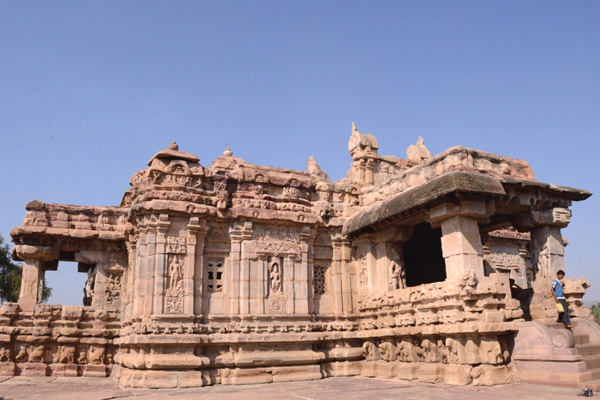
Built by Queen Lokamahadevi in the 8th century to commemorate the victory of Vikramaditya II over the Pallavas of Kanchi. This is the largest temple in Pattadakal. Multiple inscriptions and stone carvings are featured on the stone mantapa. Sculptures of various Hindu Gods are housed in this temple. Earlier, it was known by the name Lokesvara Temple.
The Karnataka government organizes the annual Virupaksha temple car festival which draws large crowds every year.
2) Kashiviswanatha Temple
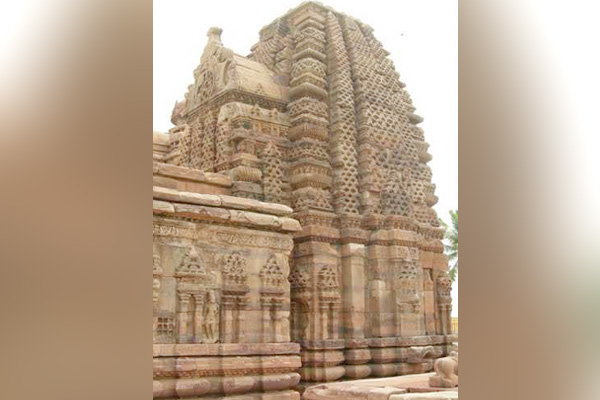
Constructed during the 8th century by the Rashtrakutas, this temple displays the Nagara architecture. The pillars in the passage of this temple have female figurines engraved on them. The monument is craved in the history, and the artistic perfection of the engravings make it a must visit destination in Pattadakal.
3) Jain Temple
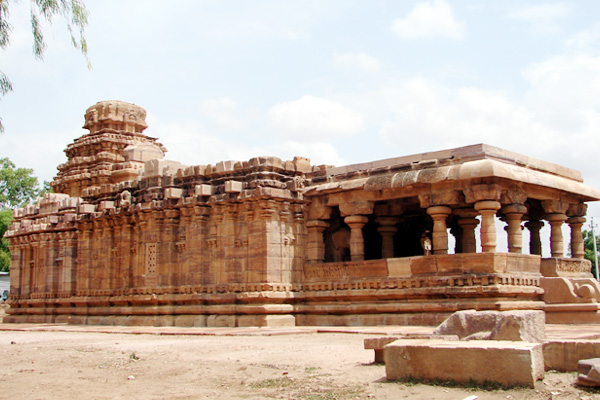
The Jain temple is made following the Dravidian architectural style and has various beautiful and intricate sculptures. It may have been built in the 9th century by King Amoghavarsha I Or his son Krishna II. There is still ambiguity over the identity of the monument’s chief patron. This is the only Jain temple in Pattadakal. Several thousand tourists visit this monument every year to savor its artistic excellence.
4) Sangemeshwara Temple
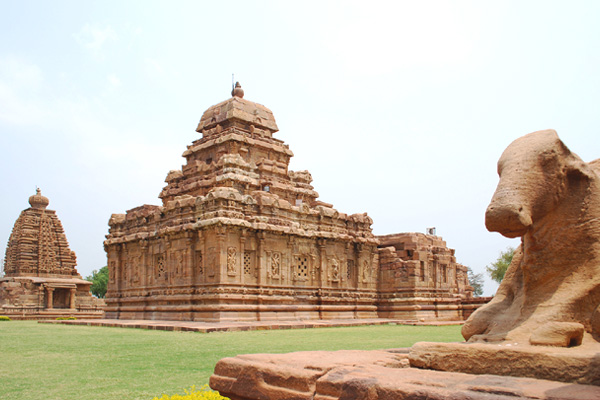
One of the oldest temples in India, it was constructed between 696 and 733 AD by the Chalukya King Vijayaditya Satyashraya. Displaying Dravidian architecture, it was earlier known as the Vijayeswara temple. Sangameshwara stands between the Virupaksha and Galaganath temples. Following the Dravidian style of architecture, the edifice was constructed and is remarkable for its intricate and detailed design and architecture.
5) Papanatha Temple
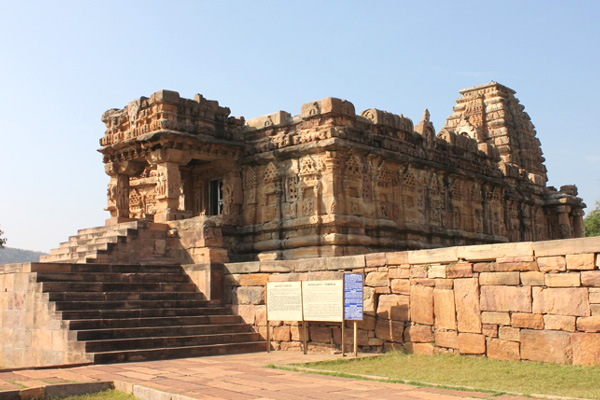
Originally to be built in the Nagara style, this temple was later built in the Dravidian style of architecture. Thus the temple contains elements of both. Various beautiful carvings can be seen on the walls of the temple, including depictions of the Ramayana and Mahabharata. The ceiling is adorned with remarkable figures of Shiva-Parvathi with the Gandharvas and Vishnu. In the beauty of the temple, the expertise of the artisans is evident. Several art and history enthusiasts visit this monument every year.
6) Galaganath Temple
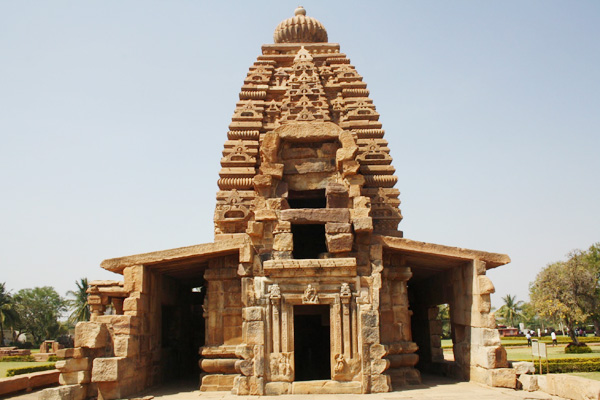
Constructed in the first half of the 8th century. It faces to the east and is located on the banks of the Tungabhadra River. This temple has a sculpture of Lord Shiva killing the demon Andhakasura. Also, small figures of Gajalakshmi and Kubera are featured within this temple.
SUPRAJA


